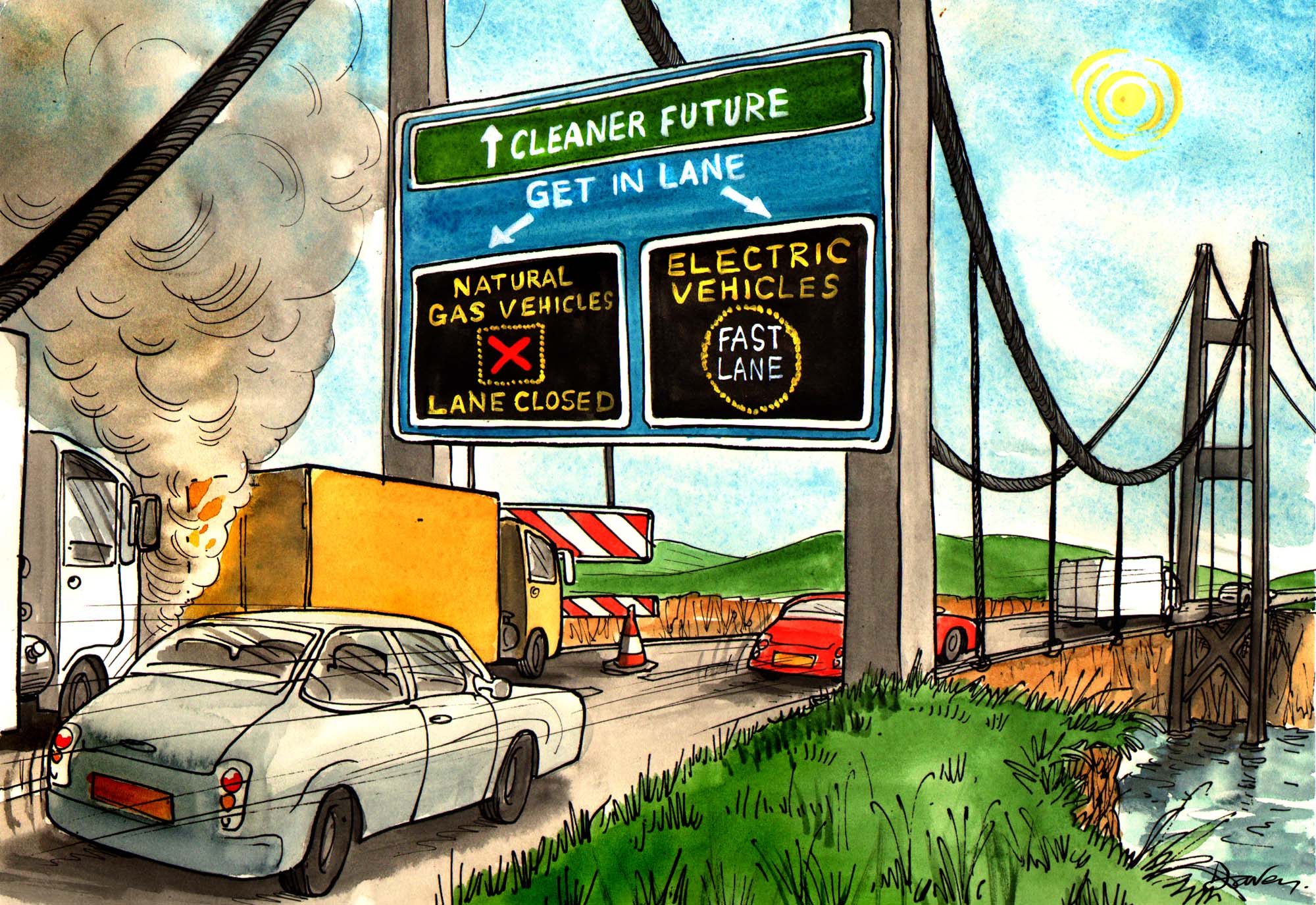
Natural gas not a ‘bridge fuel’ to cleaner trucks and cars – study
Natural gas is not a ‘bridge fuel’ to a cleaner future for cars and trucks – as the fossil fuel industry claims – because it would be largely ineffective in cutting greenhouse gas (GHG) emissions and air pollution, an independent study has found. Instead petrol-hybrid, electric and hydrogen cars deliver much greater climate benefits.
Considering the emissions from extraction to vehicle tailpipe, there are no GHG savings in shifting from diesel cars and trucks to compressed or liquefied natural gas (LNG) cars and trucks, according to the research. Also, compressed natural gas-powered cars (CNG) offer almost no extra air pollution benefits compared to petrol ones. While CNG cars emit less NOx than diesel engines, the introduction of real-world tests and future tightening of emission standards will greatly reduce that advantage.
The results come as the European Commission released a proposal to guarantee its gas supply security and is preparing another one to implement the EU’s 2030 climate targets for the transport, buildings and agriculture sectors. It is also developing a communication to decarbonise the road transport sector, to be announced this summer.
Carlos Calvel Ambel, T&E’s transport and energy analyst, said: ‘Natural gas is not a ‘bridge fuel’, but an expensive dead-end on the road to decarbonising transport. Europe is in danger of repeating past fuels mistakes with promoting diesel and biofuels that have proved costly and harmful.’
Emissions and methane leakage during the extraction, production and transport of gas ensure that gas-powered trucks and buses would always result in higher overall GHG emissions than conventionally powered ones. Gas trucks also have only minor impacts on air pollution compared to the new Euro VI-standard trucks now on sale.
Biomethane from sustainable sources, such as waste, can have niche uses – buses and delivery vehicles at local level – but cannot be generated in sufficient volumes for wider use in road transport and will create an unnecessary competition with other sectors, according to the analysis.
T&E said there was no justification for the lower fuel duties enjoyed by gas around Europe or the public money many governments are now considering investing in gas refuelling infrastructure.
Carlos Calvel Ambel added: ‘We need to tackle truck CO2 emissions but gas is not the answer. Gas trucks are no better on air pollution and are worse for the climate. Governments need to stop wasting taxpayers’ money on convincing hauliers to invest in a technology that isn’t going anywhere.’
In the shipping sector, LNG burns significantly cleaner than heavy fuel oil (HFO) and marine gas oil (MGO). While the study finds clear air pollution advantages from using LNG, its GHG emissions benefits are highly dependent on methane slip at the production, distribution and operational levels. It recommends measures to control methane slip be taken.
LNG ships would require the development and upgrading of infrastructure, including terminals and LNG storage facilities, incurring infrastructure and capital costs of around €170 per tonne of LNG, according to the consultants’ cost analysis. This is compared to €10 per tonne for existing HFO and MGO infrastructure, a very significant difference which T&E says should not be funded from the public purse as it would constitute another fossil fuel subsidy.
However, a mandated shift away from oil products towards gas would help address the most pressing environmental concerns over Arctic shipping, such as oil spills and black carbon emission deposited on ice, the study noted. The use of LNG in polar waters was not investigated in detail.
